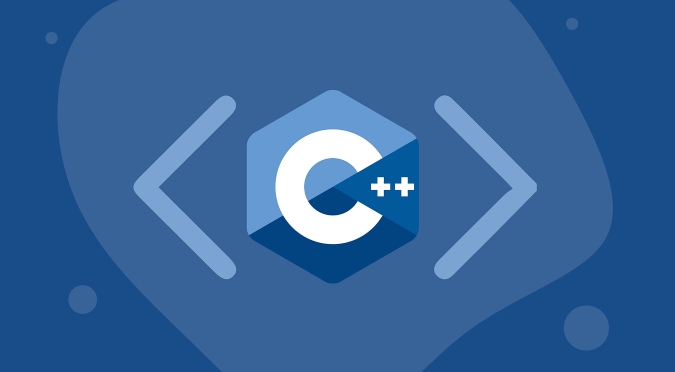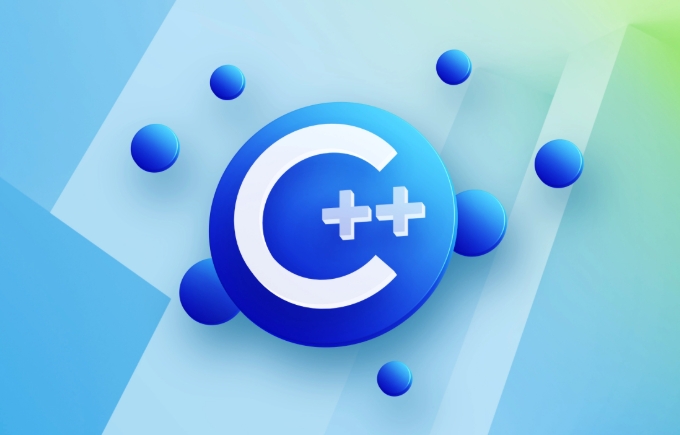People who study Python transfer to C The most direct confusion is: Why can't they write like Python? Because C, although the syntax is more complex, provides underlying control capabilities and performance advantages. 1. In terms of syntax structure, C uses curly braces {} instead of indentation to organize code blocks, and variable types must be explicitly declared; 2. In terms of type system and memory management, C does not have an automatic garbage collection mechanism, and needs to manually manage memory and pay attention to freeing resources. RAII technology can assist resource management; 3. In function and class definitions, C needs to explicitly access modifiers, constructors and destructors, and supports advanced functions such as operator overloading; 4. In terms of standard libraries, STL provides powerful containers and algorithms, but needs to adapt to generic programming ideas; 5. Common pitfalls include adding semicolons after each statement, using std:: to access the namespace, including necessary header files, and separation of the compilation and operation process. Mastering these key differences will help Python developers transition smoothly to C.

People who study Python transfer to C, the most direct confusion is: Why can't they write like Python? C looks more complex and wordy, but its underlying control capabilities and performance advantages are irreplaceable by Python. This article starts from the perspective of a developer familiar with Python and helps you quickly understand the core differences and key usage of C.

Basic syntax structure: no indentation coercion, type must be declared
Python organizes code blocks by indentation, while C uses curly braces {} . This may not be used to at first, but after adapting, it is actually more free, especially when writing complex logic.

More importantly, C must declare variable types , unlike Python that can dynamically assign values:
int age = 25; std::string name = "Alice";
Compare Python:

age = 25 name = "Alice"
You will find C is "verbose" to write, but this explicit declaration helps compiler optimization and avoid runtime errors.
In addition, the entry function of C is main() , and the return type must be int . Usually, the end of the program is returned to 0 , which means that the program ends normally:
#include <iostream>
using namespace std;
int main() {
cout << "Hello, World!" << endl;
return 0;
}Type system and memory management: no garbage collection mechanism
This is one of the biggest differences between C and Python. Python has automatic garbage collection (GC), so you don't have to worry about memory leaks. But C does not, memory needs to be managed manually, especially when you use pointers.
For example, you allocate an object on the heap:
int* p = new int(10); // Remember to release delete p after use;
If you don't delete it will cause a memory leak. This should be paid special attention to for those who are used to Python's automatic memory management.
There is another concept called "RAII" (Resource Acquisition Is Initialization), which is a very common resource management method in C. For example, file operations, locks, etc. can automatically handle resource release through constructors/destructors.
Functions and classes: object-oriented styles are similar but implementations are different
Python's class definition is very concise, while C's class requires more details, such as access modifiers (public/private), constructors, destructors, etc.
Let’s take a look at a simple class definition:
class Person {
private:
std::string name;
public:
Person(std::string n) : name(n) {}
void saysHello() {
std::cout << "Hello, I'm " << name << std::endl;
}
};When using:
Person p("Bob");
p.sayHello(); You will find that C's class needs to declare member variable access permissions first, and the constructor can also use initialization list ( : name(n) ) to improve efficiency.
In addition, C supports operator overloading, template generics, multiple inheritance and other functions. These Python can also be done, but the implementation method is completely different.
Standard and third-party libraries: STL is your new friend
Python has a rich standard library and pip that can hold various packages. Although C's standard library is not that rich, STL (Standard Template Library) is a very powerful tool set, including containers (vector, map, set), algorithms (sort, find) and iterators.
For example, a list in Python can be written like this:
nums = [1, 2, 3] nums.append(4)
C corresponds to vector :
#include <vector>
std::vector<int> nums = {1, 2, 3};
nums.push_back(4);The design idea of ??STL is generic templates. Although the learning curve is a bit steep, once you master it, you can write efficient and flexible code.
Tips: Reminders of some common pitfalls
- Don't forget the semicolon : C You need to add a semicolon after each statement, which is not required in Python.
- The namespace should be
std::: For example,coutandvectorare both in thestdnamespace. - Don't omit the header files : each functional module needs to include the corresponding header files, such as
<vector></vector>and<iostream></iostream>. - Compilation and running are separate : after writing the code, you must first compile it into an executable file and then run it, unlike Python that directly explains execution.
Basically that's it. C is indeed more cumbersome than Python, but it is an important step to system-level programming, game development, and high-performance computing. As long as you understand the basic syntax and memory model, the road ahead will be much smoother.
The above is the detailed content of C tutorial for people who know Python. For more information, please follow other related articles on the PHP Chinese website!

Hot AI Tools

Undress AI Tool
Undress images for free

Undresser.AI Undress
AI-powered app for creating realistic nude photos

AI Clothes Remover
Online AI tool for removing clothes from photos.

Clothoff.io
AI clothes remover

Video Face Swap
Swap faces in any video effortlessly with our completely free AI face swap tool!

Hot Article

Hot Tools

Notepad++7.3.1
Easy-to-use and free code editor

SublimeText3 Chinese version
Chinese version, very easy to use

Zend Studio 13.0.1
Powerful PHP integrated development environment

Dreamweaver CS6
Visual web development tools

SublimeText3 Mac version
God-level code editing software (SublimeText3)

Hot Topics
 How to handle API authentication in Python
Jul 13, 2025 am 02:22 AM
How to handle API authentication in Python
Jul 13, 2025 am 02:22 AM
The key to dealing with API authentication is to understand and use the authentication method correctly. 1. APIKey is the simplest authentication method, usually placed in the request header or URL parameters; 2. BasicAuth uses username and password for Base64 encoding transmission, which is suitable for internal systems; 3. OAuth2 needs to obtain the token first through client_id and client_secret, and then bring the BearerToken in the request header; 4. In order to deal with the token expiration, the token management class can be encapsulated and automatically refreshed the token; in short, selecting the appropriate method according to the document and safely storing the key information is the key.
 How to parse large JSON files in Python?
Jul 13, 2025 am 01:46 AM
How to parse large JSON files in Python?
Jul 13, 2025 am 01:46 AM
How to efficiently handle large JSON files in Python? 1. Use the ijson library to stream and avoid memory overflow through item-by-item parsing; 2. If it is in JSONLines format, you can read it line by line and process it with json.loads(); 3. Or split the large file into small pieces and then process it separately. These methods effectively solve the memory limitation problem and are suitable for different scenarios.
 Python for loop over a tuple
Jul 13, 2025 am 02:55 AM
Python for loop over a tuple
Jul 13, 2025 am 02:55 AM
In Python, the method of traversing tuples with for loops includes directly iterating over elements, getting indexes and elements at the same time, and processing nested tuples. 1. Use the for loop directly to access each element in sequence without managing the index; 2. Use enumerate() to get the index and value at the same time. The default index is 0, and the start parameter can also be specified; 3. Nested tuples can be unpacked in the loop, but it is necessary to ensure that the subtuple structure is consistent, otherwise an unpacking error will be raised; in addition, the tuple is immutable and the content cannot be modified in the loop. Unwanted values can be ignored by \_. It is recommended to check whether the tuple is empty before traversing to avoid errors.
 How to generate a UUID/GUID in C ?
Jul 13, 2025 am 02:35 AM
How to generate a UUID/GUID in C ?
Jul 13, 2025 am 02:35 AM
There are three effective ways to generate UUIDs or GUIDs in C: 1. Use the Boost library, which provides multi-version support and is simple to interface; 2. Manually generate Version4UUIDs suitable for simple needs; 3. Use platform-specific APIs (such as Windows' CoCreateGuid), without third-party dependencies. Boost is suitable for most modern projects, manual implementation is suitable for lightweight scenarios, and platform API is suitable for enterprise environments.
 How to prevent a method from being overridden in Python?
Jul 13, 2025 am 02:56 AM
How to prevent a method from being overridden in Python?
Jul 13, 2025 am 02:56 AM
In Python, although there is no built-in final keyword, it can simulate unsurpassable methods through name rewriting, runtime exceptions, decorators, etc. 1. Use double underscore prefix to trigger name rewriting, making it difficult for subclasses to overwrite methods; 2. judge the caller type in the method and throw an exception to prevent subclass redefinition; 3. Use a custom decorator to mark the method as final, and check it in combination with metaclass or class decorator; 4. The behavior can be encapsulated as property attributes to reduce the possibility of being modified. These methods provide varying degrees of protection, but none of them completely restrict the coverage behavior.
 what is if else in python
Jul 13, 2025 am 02:48 AM
what is if else in python
Jul 13, 2025 am 02:48 AM
ifelse is the infrastructure used in Python for conditional judgment, and different code blocks are executed through the authenticity of the condition. It supports the use of elif to add branches when multi-condition judgment, and indentation is the syntax key; if num=15, the program outputs "this number is greater than 10"; if the assignment logic is required, ternary operators such as status="adult"ifage>=18else"minor" can be used. 1. Ifelse selects the execution path according to the true or false conditions; 2. Elif can add multiple condition branches; 3. Indentation determines the code's ownership, errors will lead to exceptions; 4. The ternary operator is suitable for simple assignment scenarios.
 How to make asynchronous API calls in Python
Jul 13, 2025 am 02:01 AM
How to make asynchronous API calls in Python
Jul 13, 2025 am 02:01 AM
Python implements asynchronous API calls with async/await with aiohttp. Use async to define coroutine functions and execute them through asyncio.run driver, for example: asyncdeffetch_data(): awaitasyncio.sleep(1); initiate asynchronous HTTP requests through aiohttp, and use asyncwith to create ClientSession and await response result; use asyncio.gather to package the task list; precautions include: avoiding blocking operations, not mixing synchronization code, and Jupyter needs to handle event loops specially. Master eventl
![What is [[nodiscard]] attribute in C ?](https://img.php.cn/upload/article/001/431/639/175242944152712.jpg?x-oss-process=image/resize,m_fill,h_207,w_330) What is [[nodiscard]] attribute in C ?
Jul 14, 2025 am 01:57 AM
What is [[nodiscard]] attribute in C ?
Jul 14, 2025 am 01:57 AM
[[nodiscard]] is a property introduced in C 17 to prompt the compiler to warn the situation where the function returns value is ignored. 1. Commonly used functions to return error codes, states or resource handles; 2. Can act on function declarations, return types, enums or classes; 3. Use (void) to explicitly ignore the return value; 4. Mainstream compilers support but do not forcefully block compilation; 5. It is recommended to use key return values to affect program logic to avoid abuse.






